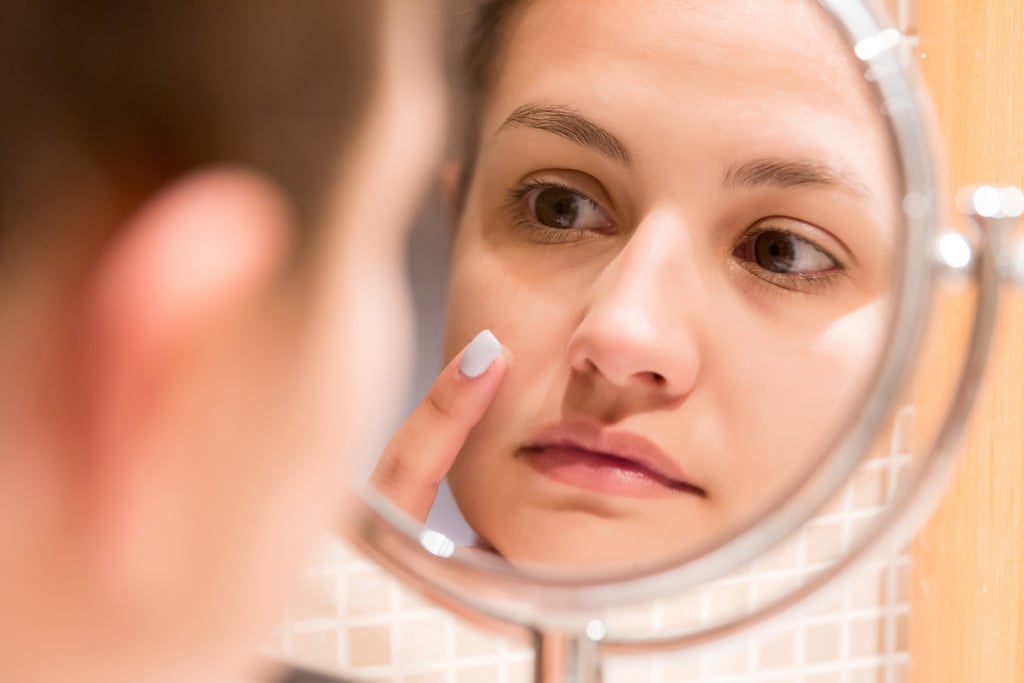We all know that dreaded feeling when a new spot starts to form deep under the skin — the painful sensation is recognisable anywhere. We immediately go into damage control mode, freshly cleansing the area, layering on any acne spot treatment within arm's reach, and hoping for the best. Even still, the inevitable usually happens, and the pimple grows no matter how much preemptive planning is involved.
It's hard to stop a breakout in its tracks [1] but not impossible. To do so, it helps if you understand the life cycle of a pimple — from the very start when you first feel it deep under the skin to the moment it finally fades away. Here, board-certified dermatologist and founder of SLMD Skincare [2], Sandra Lee, MD, AKA Dr. Pimple Popper [3], explained.
First, What's Triggering Your Breakout?
There are many different factors to consider when trying to pinpoint the cause of a new pimple [4]. The main ones are genetics, hormones, environmental aggressors, and lifestyle. "If your parents dealt with acne, you are more likely to experience pimples popping up," Dr. Lee told POPSUGAR. "Hormones also play a huge role because they trigger increased oil production in the skin." Hormones are the reason teenagers are typically more prone to breakouts and also why women might break out during their periods.
"The environment the skin is living in can also play a factor," said Dr. Lee. "Polluted air can wreak havoc, as can hot temperatures, if you are sweating more than usual and staying in that sweat." Medications, makeup products, and dietary choices can also be to blame. "Dairy may be an exacerbating factor because of the elevated hormones in milk, so if you recognise that this may be causing your breakouts, try your best to not eat a ton of cheese or dairy products."
The Many Stages of a Spot
Now that we understand what triggers breakouts, we can look at the stages of a spot.
In the first stage, the pimple forms deep under the skin. "All of our pores contain a hair follicle and a sebaceous gland that empties into it producing sebum, our skin's natural oil," said Dr. Lee. "The body is constantly regenerating and shedding dead cells, but when those dead skin cells get trapped within the pores of our skin, they combine with sebum and oil to clog the pores, creating noninflammatory acne like blackheads and whiteheads." It's that mix of dead skin cells and oil that clogs the pore and causes an infection or pimple on the skin.
If it's a cystic spot [5], you may feel it before you see it; if it's a whitehead, you might not notice it until it comes to a head. This stage can last up to a few days, but you can help speed up how soon an undergrounder comes to the surface by placing a hot, damp cloth on the area in 10-minute intervals until it comes to a head. This brings us to stage two.
In the second phase, a pimple comes to the surface — whether its in a whitehead or a big, red cystic spot. The latter can last up to a week, which is why you'll want to act fast the moment you spot it. You can help alleviate inflammation by placing an ice cube to the skin, on and off, for 30 seconds. Then, this is when it's time to attack it with a spot treatment. "The best way to speed up the healing process of a pimple is applying a spot treatment with salicylic acid or benzoyl peroxide," said Dr. Lee. "This will keep the area clean and prevent any dirt or bacteria from making the pimple worse [6]." Treating your pimple during phase two with a spot treatment can help it heal faster in the long run.
In phase three, your pimple will start to heal and shrink in size. But for really stubborn, angry spots that just won't seem to quit, Dr. Lee recommended applying a "mini blemish mask" to the area. "If you apply a dollop of spot treatment on a particularly angry pimple, it helps treat the pimple, but it also helps to remind you not to disturb the area, which is just as important as treating the pimple in the first place."
Whatever you do, just don't pick at it. Picking or popping your spot at home [7] can push the clogged pore deeper and lead to scarring.
